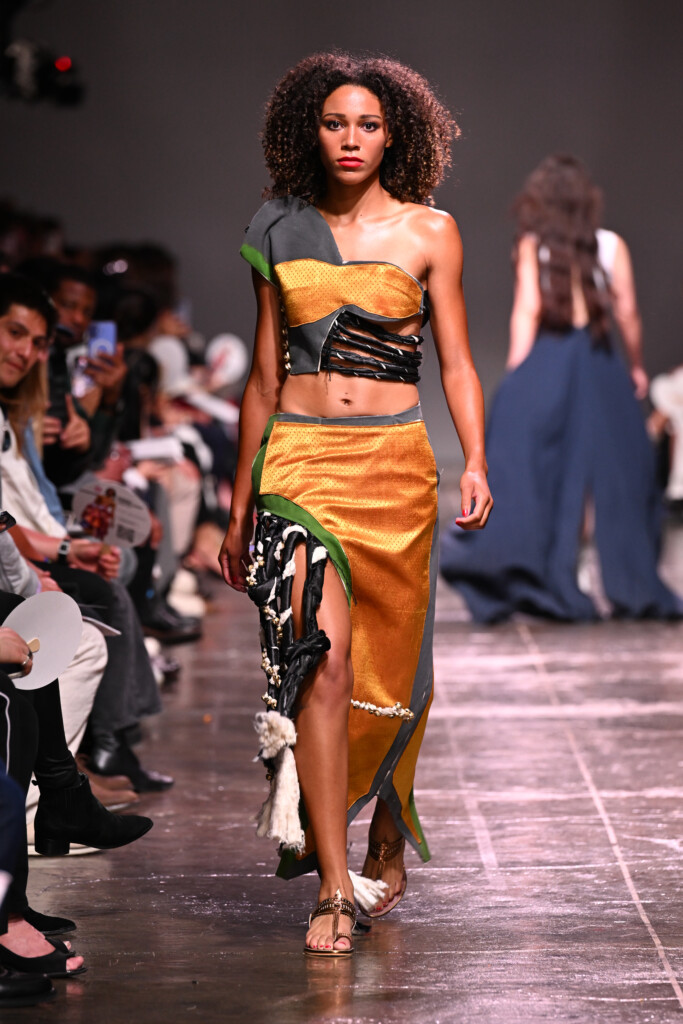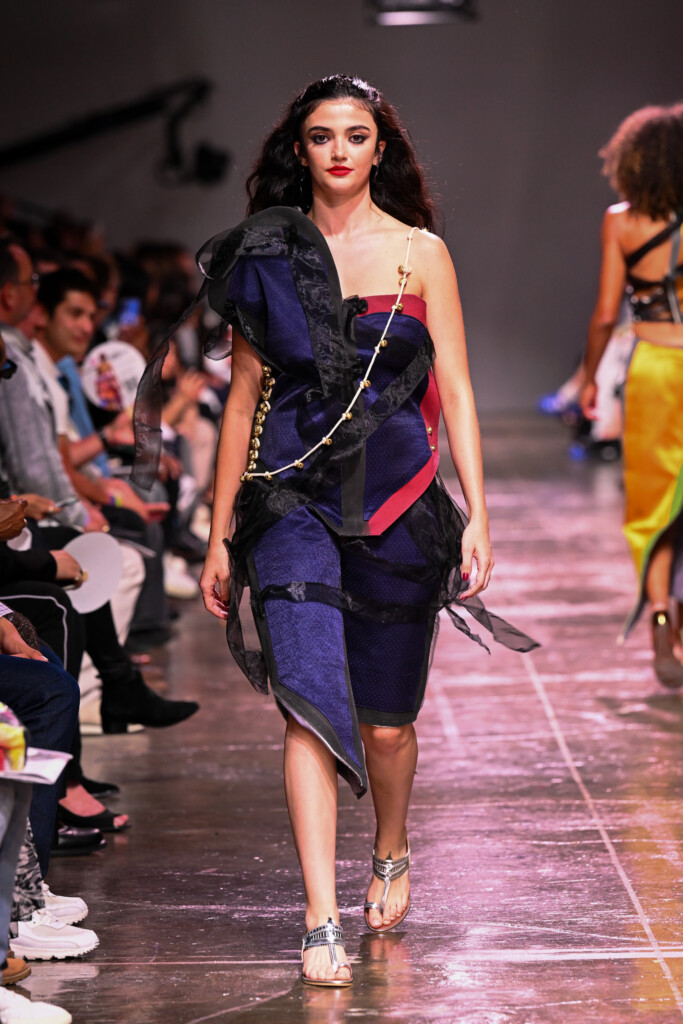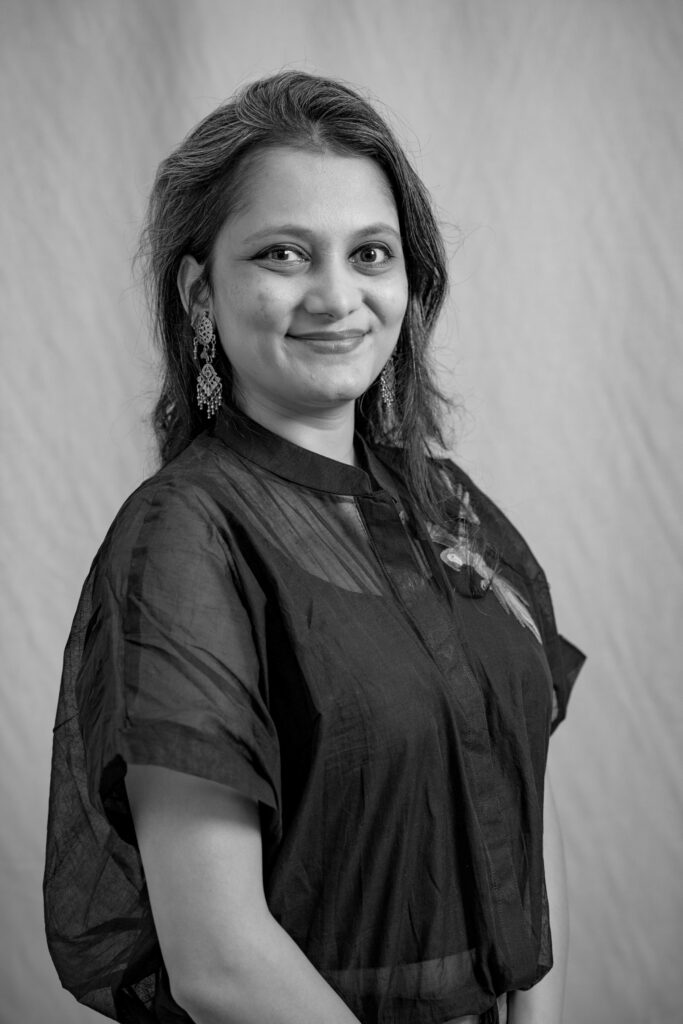Dance With Feelings of Love, Anger, Happiness, and Sadness
A unique aspect of having a different background is the opportunity to discover a rich culture. Devashree Jhaveri, B.F.A. Fashion Design, was born in Ahmedabad, Gujarat, India, and was raised by her mother, a textile collector. Growing up, she learned a great deal about textiles from her mother and now aspires to share her culture and elevate Indian textiles on a global stage.
Jhaveri’s Spring 2025 collection explores her emotional connection with the spirit world. She drew inspiration from the song “DAKLA” by Bandish Projekt, which made her realize the depth of her connection to the piece. The song evokes a wide range of emotions, including strength, weakness, power, sadness, and happiness.
“Hearing the song takes me to a different place, where my mind and body dance with feelings of love, anger, happiness, sadness, and so much more,” explained Jhaveri.
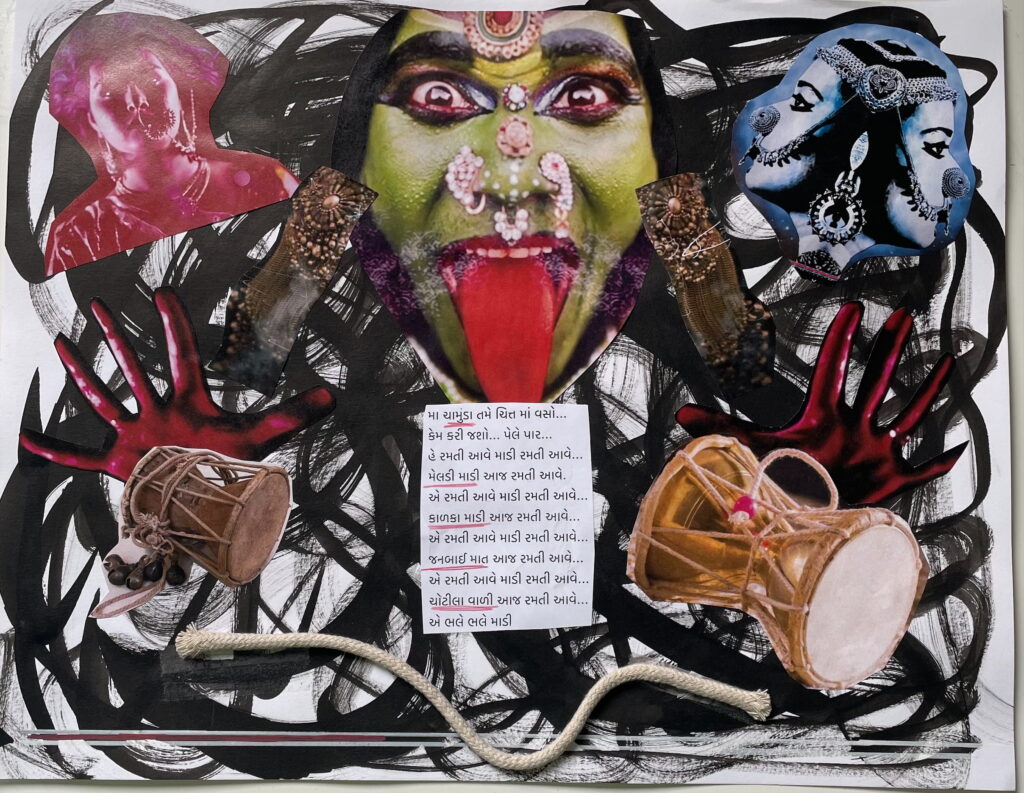
Through her work, she aims to tell a story highlighting that every woman embodies the essence of a goddess, much like the song that celebrates women’s strength, power, anger, and softness. During this process, Jhaveri encountered significant challenges in translating her emotions into her designs, but as a result, she grew as a designer.
Her work focuses on sustainability. Most of her designs utilize recycled mashru fabrics that her mother collected in India. “In ancient times, mothers gifted blankets made from mashru to newborn babies because it was soft and satiny,” said Jhaveri.
The collection of mashru fabrics features a silky front and a cotton back, with each side displaying a different color that Jhaveri primarily selected, including green, yellow, blue, and red. These colors reflect her emotions, which she also translates into her music.
To bring her inspiration to life, Jhaveri listened to the song repeatedly and let its beats guide her as she drew on the paper. Each line and painting emerged on the page, reflecting her imagination and artistic collection. She chose canvas as the primary medium to showcase her artwork clearly.
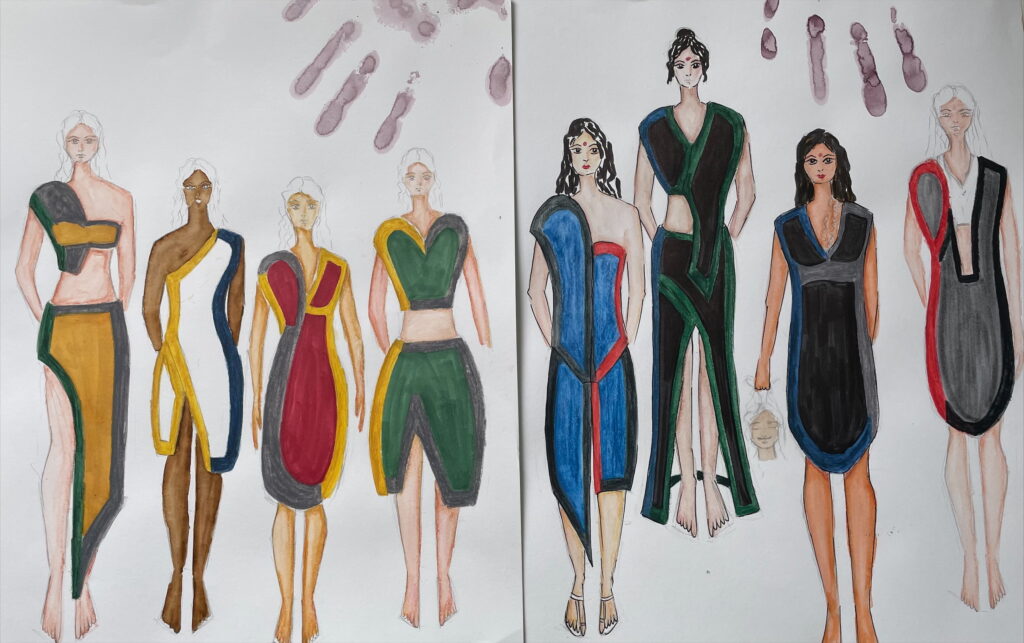
A significant element of the design is the white rope, which she drew inspiration from the instrument featured in the song. This white rope represents the parts of the instrument made of wood, leather, and rope.
“I decided to use rope to symbolize that holding a mother’s hand may lead you on a long journey, but it will always be beneficial for you,” said Jhaveri.
In Indian culture, people hold onto the instrument’s rope to connect with the woman’s emotions, which can change over time.
Through her work, Jhaveri looks to demonstrate that Indian culture, art, and techniques have much to offer and can be applied to a wide range of contexts. At Academy of Art University, she challenged herself as a designer and made significant improvements, allowing her to convey a story through her work, even when her imagination and thoughts are messy and chaotic.
Words by Anudari Tuvshintuya, B.F.A. Fashion Communication and Styling
